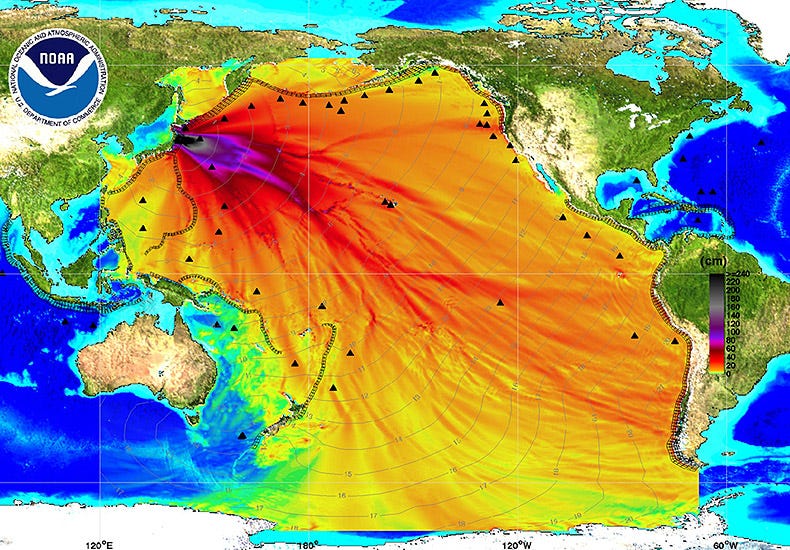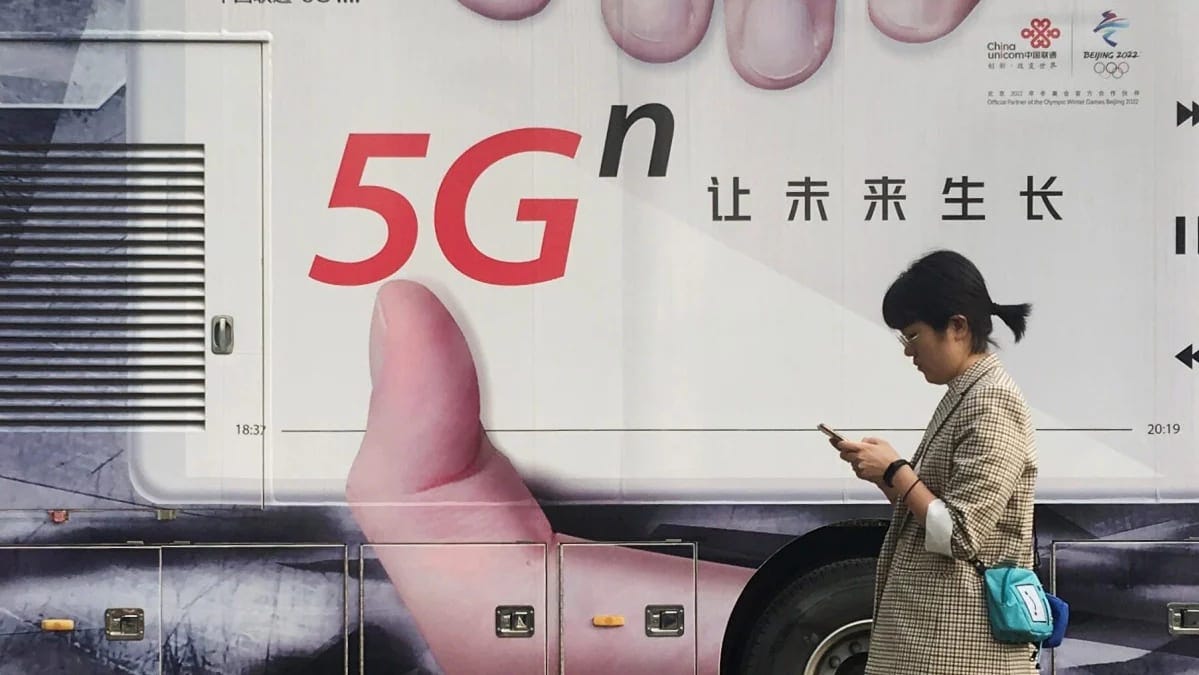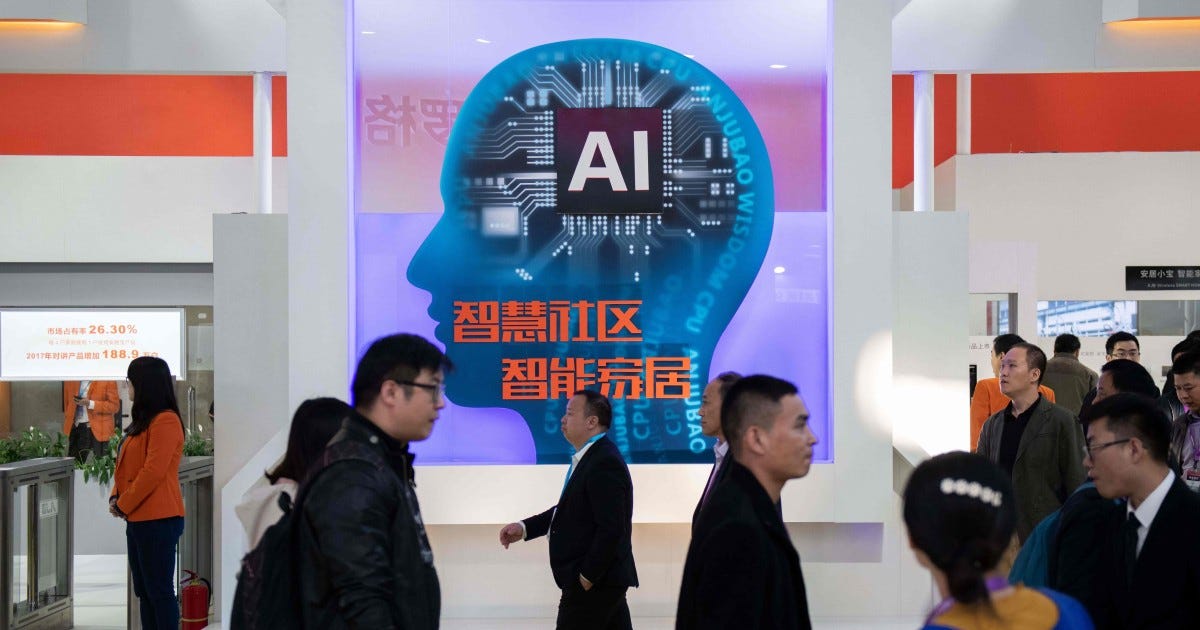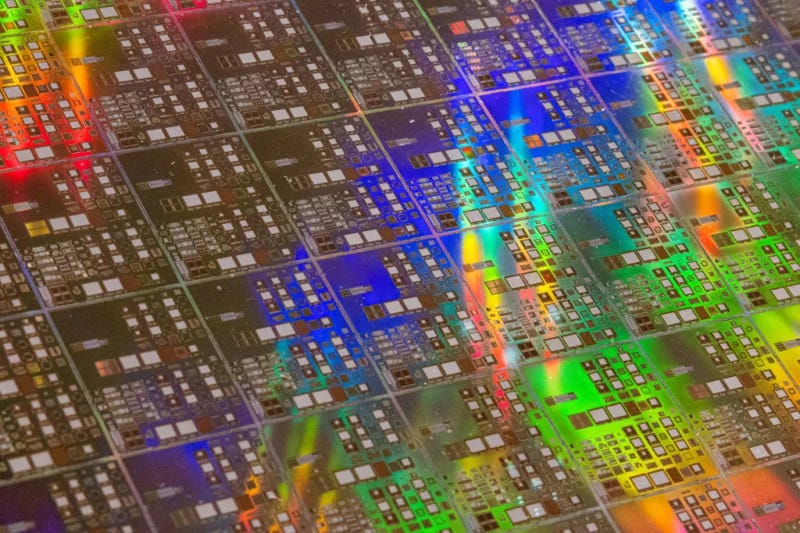Technical Issues
Fukushima half-life, China-tech 2035, Washington gets it wrong, China tech is global, EU tech export controls, Future tech governance
UPDATE: “I am Long Mekong Daily - ChatGPT did not produce this update”, but it could have. All aboard for a struggle for collective or veto governance over new tech.
Global technical standards are changing fast. Massive pollution from Fukushima ignores all technical governance issues and is poisoning the entire Pacific.
China has a big plan to set standards across digital industrialisation and industrial digitalisation. The world’s largest manufacturer and trading nation - China - takes its standards global.
Washington takes the perspective that US rules are global rules, but things change. Europe is joining the US to set export controls and the first victim is EU-US innovation.
Pacific leaders oppose Fukushima wastewater release
Pacific leaders underlined in a statement that science and data should guide political decisions on Japan's proposed discharge of treated radioactive wastewater from the wrecked Fukushima nuclear plant into the sea. The outgoing chair and Fiji's Prime Minister Sitiveni Rabuka, together with other PIF leaders, believes the decision is not as simple as a domestic issue of Japan, but concerns the South Pacific island countries and beyond. Given that related data and evidence provided by Japan are far from independent or verifiable, the PIF has called on the country repeatedly to delay the discharge plan.
Civil society groups in Japan and many international organizations have also voiced objections to the plan, citing a lack of a practical demonstration and its potential threat to society and marine ecology.
Over the past years, fishermen in neighboring countries have staged several rallies, calling for immediate stop to the "grave criminal act" of releasing radioactive water into the sea. Within Japan, local civic groups have organized protests outside the government house of Fukushima Prefecture.
Japan's unilateral push to discharge radioactive wastewater from its crippled Fukushima Daiichi nuclear power plant into the Pacific Ocean is irresponsible and harmful, South Korean green activists have said.
Read more here.
China Standards 2035 Strategy
Following the ‘Made in China 2025’ strategic plan, China officially launched the ‘China Standards 2035’ strategy in 2018, aiming to create a blueprint for the Chinese government and leading tech companies to set global standards for emerging technologies, such as 5G, Internet of Things (IoT), and artificial intelligence (AI).
The Action Plan encompasses a total of 33 articles, covering a full range of diverse sectors, including manufacturing, information technology, service industry, carbon standardization and upgrading, ecosystem protection, and rural revitalization.
The China Standards 2035 strategy empowers Chinese enterprises to participate in standardization, with the incentive being that they can benefit from the economic gains that come with licenses and royalties. Further, greater compatibility following technical standardization will enable different companies to work seamlessly, improving efficiency throughout the whole supply chain and leaving more resources to drive innovation. This is critical for the Chinese companies involved in setting norms and will obtain them higher comparative advantages.
Overall, China views standardization as a way to strengthen its research and development (R&D) ecosystem by elevating whole-sector capacities, particularly in critical and emerging industries like AI, quantum computing, and biotechnology. The Action Plan offers concrete measures that links the process of developing standards and technological innovation to promote industry optimization and upgrades.
In recent years, China is striving to play an increasing role in the formulation of international standards to shape the future direction of tech development. The Action Plan, in articles 17 to 21, also stresses greater involvement for China in international standard-setting bodies. Being able to determine the standards allows a country to gain more control over system design and rule making – it can also grant them a premium position in the global market as they possess first-mover advantages in key sectors.
Read more here.
What Washington Gets Wrong About China and Technical Standards
Organisations that set international technical standards face two potential challenges: one from China, which wants to deepen its participation in these groups, and the other from the United States, which might overreact to China’s activities and undermine the system. Over the past four years, Washington’s foreign policy establishment has stumbled on a new arena for competition with China: international technical standards. During that time, standards have been the focus of news stories, think tank reports, and even several pieces of federal legislation. Across these, the master narrative is largely the same: technical standards are a key part of technology competition, China is taking over international standards bodies, and it is successfully manipulating those standards as part of its quest for global tech domination.
Parts of that narrative ring true. Technical standards are a critical part of the global technology ecosystem because they facilitate trade, can give first-movers a competitive advantage, and can generate significant revenue for companies with large patent portfolios.
But Washington’s master narrative around technical standards is wrong because it fundamentally misunderstands what international technical standards do and how standards development organizations (SDOs) operate.
There are real concerns when it comes to China and technical standards, and those concerns require targeted actions. But to make the right prescription, the U.S. policy community must first correctly diagnose the problem.
Read more here.
Chinese standards going global an unavoidable trend
While China is set to release its China Standards 2035 - an industrial plan aimed at strengthening the development of next-generation technology standards - the global standardisation game for emerging industries may have already begun. As a latecomer to the international standard-setting arena, China will, of course, face an uphill battle in catching up with traditional players. Western countries that have largely dominated the field will certainly not welcome the game-changer, but that won't change China's determination to actively influence standard setting in a growing number of emerging technological fields, from telecommunications to artificial intelligence.
At present, China is still in a relatively weak position when it comes to the setting of international standards, although it is a major manufacturing power.
Among the 160 or so member countries in the International Organization for Standardization (ISO), only a few developed countries define about 95 percent of ISO standards, with only 0.7 percent of all ISO standards set by China. The low level of inclusion in formulating global standards has often put China in an awkward situation. Even amid the shortage of medical supplies during the coronavirus crisis, the US Food and Drug Administration did not at the beginning authorize the use of KN95 masks, which meet Chinese standards and are almost identical in performance to the N95 masks that meet US standards. In early April, when it was unable to find an alternative choice, the use of KN95 masks was authorized.
In the current international geopolitical environment, China Standards 2035 will likely spark another round of containment attacks from the US. But the standard-setting competition is an inescapable challenge facing China in the future world market. History shows that companies that translate their technologies into widely accepted standards earn massive revenues through market dominance. That is why the international standard-setting process is often accompanied by fierce competition. A country's ability to set international standards usually affects its trade and technology landscape.
China has been proactive in engaging in global standard setting for cutting-edge technologies in recent years. Huawei holds the highest number of standard-essential 5G patents, more than its closest European rivals Nokia and Ericsson. China has also made relatively fast progress in setting standards for construction projects like dams, power grids and reservoirs, while Western standard development in these fields has been stalling.
Chinese standards will inevitably reach the world, and that will not be stopped by geopolitical games.
Read more here.
China’s '2035 Standards' quest
International standards form the basis of a global technical governance framework that helps develop worldwide, agreed-upon norms and procedures. Recently, there has been a steady increase in state participation and advocacy in setting global technical standards. A state’s ability to obtain technological self-sufficiency in a particular domain is the basis for using international standards to its advantage.
SDOs have traditionally been under the influence of the West, which marks a shift in the landscape of technical standard setting.
States have leveraged their position at standards-developing organizations (SDOs) and strategically placed lobbyists in powerful positions to influence the standard-setting process in their favor. China has recently used this to its advantage with considerable influence at the 3rd Generation Partnership Project (3GPP), an international body responsible for setting global telecommunications standards. Chinese companies’ representatives (Huawei, ZTE) with a high level of expertise in 5G technology have been elected chairman and deputy chairman of 3GPP. This has resulted in a heavy contest between Western and Chinese companies over the establishment of 5G standards.
Read more here.
Europe in the New World of Export Controls
When Japan and the Netherlands struck a deal with the US to align with restrictions the Biden administration imposed in October on semiconductor technology transfers to China, the trilateral agreement drew sharp criticism in certain European circles. Details of the agreement have not been made public. The Netherlands has been accused of acting outside the framework of the European Union given that the bloc has exclusive competence in external trade. The Dutch were also slammed for undermining the legitimate objective of export controls — which are only intended to target products used for military purposes — by backing a US policy that goes much further than military applications. Indeed, Washington has made it clear that its goal is to turn the screws on China’s ability to catch up in the chip race and establish itself as a global tech leader. Both criticisms are unfounded.
The controls were not just designed to weaken China's defense industry but also seek to hobble the country's digital transformation across all civilian commercial applications.
The question is whether the semiconductor technologies targeted by the latest US restrictions are about military competition with China or about more than that. Political noise has led to some confusion on this matter. According to US National Security Advisor Jake Sullivan, the newly announced rules are necessary to achieve Washington's goal of maintaining "as large of a lead as possible" over the Chinese semiconductor industry.
Read more here.
Shaping the Future of Technology Governance
1. Green tech at a tipping point:
Thanks to continual improvements in technology over the past decade, the cost of solar and wind power have fallen drastically, making renewables cheaper than fossil fuels. According to some estimates the switch from fossil fuels to renewable energy will help economies save $12 trillion globally by 2050.
One of the most promising technologies we can expect progress in is green hydrogen, a new clean-burning source of energy which allows energy from renewables to be captured and transported long distances – from regions with abundant wind or solar energy resources, to energy-hungry areas thousands of kilometres away.
Nuclear fusion is another green technology to watch in 2023, following the recent proof of concept that it can generate more energy than is required to kickstart the fusion process. Although still years away from achieving energy at scale, these latest results are likely to spur further research to develop the technology, bringing us closer to a future in which nuclear fusion could provide near-limitless, safe and clean energy.
2. Hyper-connectivity and cyber-resilience:
Economic and geopolitical dynamics are pushing globalization into retreat and propelling the fragmentation of cyberspace alongside competing political blocs. However, the structural forces of technological progress are moving towards more connectivity, not less. In the coming year, 15 billion devices will be connected into the Internet of Things (IoT), and this number is expected to double by 2030. A principal driver of this trend will be the rapid expansion of 5G coverage in 2023, which will allow devices to communicate faster and improve their overall performance.
Our dependency on connected devices and infrastructures is growing at an exponential pace, and so do the risks of collapse by accident or as the result of an attack. Governments and regulators can be expected to step up efforts to ensure that connected devices comply with latest cybersecurity standards. This includes the European Union pushing ahead with its proposed EU Cyber-resilience Act and the Biden administration introducing a cybersecurity labelling rating programme for IoT devices.
3. Quantum computing R&D
Quantum computing, which uses subatomic particles to create new ways of processing and storing information, promises to be the future of computing. With the promise of operating in orders of magnitude faster than the best processors available today, quantum technology will help to solve complex problems in a fraction of the time.
Although quantum technology is still in its infancy, huge government and industry investment means we are likely to see rapid progress in hardware and software in the coming year, as well as quantum products starting to come onto the market. At the same time, business and government leaders will step up efforts to understand and mitigate the risks the technology poses, from crippling prevailing cryptography to the transformation of warfare.
4. Gene editing goes mainstream
Until recently, CRISPR-Cas9, the gene-editing technology that won its developers the 2020 Nobel Prize in Chemistry, has been predominately used as a research tool to understand the importance of specific genes and discover new drugs. Since the first person received a gene-editing therapy three years ago, the technology has been used to treat congenital blindness, heart diseaseand sickle cell disease, among others. And while primary use-cases are diseases with a single-gene mutation, early research suggests that conditions like Alzheimer’s and chronic pain could also be treated with CRISPR.
In 2023, we are likely to see an expansion of gene editing in medicine, as well as other sectors, powering a multi billion-dollar industry, and posing complex ethical dilemmas.
5. Artificial intelligence everywhere
Towards the end of 2022, OpenAI’s interactive conversational model Chat GPTattracted more than a million users in just five days, and triggered a new debate on the opportunities and risks of artificial intelligence (AI). With AI spending forecast to exceed $500 billion in 2023, there will be rapid advances in adaptive and generative AI.
Adaptive AI can continuously retrain its models to learn and adapt based on new experiences, without needing developers to rebuild it, leading to faster and better outcomes. Generative AI uses neural network models to create something new. Recent releases of text-to-image and text-to-video generators are appealing to consumers, but also raise significant concerns around the spread of disinformation, harmful content, copyright protections and algorithmic biases. Regulators and online watchdogs will be looking at this over the coming year.
Read more here.










